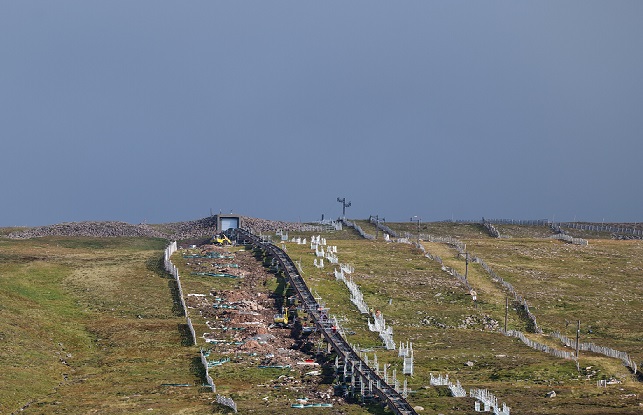
Recently Highland and Islands Enterprise released the remains of the Health and Safety (H and S) File concerning the construction of the funicular railway required under the Construction, Design and Management (CDM) Regulations 1994. Having originally requested this file on 21/01/21 I received this email on 06/09/21 at 12.22p.m. from HIE:-

I had been notified of the publication of the file by Nick Kempe on Wednesday 01/09/21, five days before, so I don’t know exactly when the information was released as no date is included! This post takes a first look at the significance of the file for what is now happening at Cairn Gorm.
Background
In December 2018, HIE published consulting engineers COWI viaduct appraisal report into the funicular (see here). COWI mentioned in that report that they were basing their findings on the Health and Safety file provided by HIE:

This strongly implied implied information might be missing from the file and the file itself might not be in proper order, hence my information request.
HIE responded to my request initially by stating that only a hard copy of the file was available and that due to Covid restrictions it was inaccessible at that time. It appears HIE are a little bit slow entering the 21st century!
Eight months later, HIE’s response to Point 2 (above) demonstrates a lack of understanding of the legal requirements for Health and Safety files and their significance. According to the the Construction (Design and Management) (CDM) Regulations 1994, the H & S file would not have been issued by Morrison Construction Ltd, but by the principal designer A.F.Crudens Associates! This is confirmed by the screenshot below which also shows the Client as being Cairngorm Mountain Limited which at that time was a wholly owned subsidiary of the Cairngorm Mountain Trust (CMT):
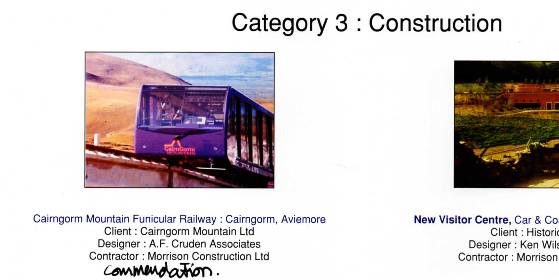
The information given for the Saltire Wards is also not quite accurate as the client was actually the Cairngorm Chairlift Company (CCC)! The CMT did not take over the CCC until after the build was finished.
The next screenshot is the updated from the CDM Regs 2015:
 This shows that HIE were negligent in either not securing the complete H & S file from CMT/CML when they bought the company in 2008 or determining what had happened to the file during its ownership by CMT/CML. If the only file was held by management at CML, then did HIE get an explanation of why some of the file had gone missing? One also presumes that HIE management should have reported the incomplete file to the relevant authority!
This shows that HIE were negligent in either not securing the complete H & S file from CMT/CML when they bought the company in 2008 or determining what had happened to the file during its ownership by CMT/CML. If the only file was held by management at CML, then did HIE get an explanation of why some of the file had gone missing? One also presumes that HIE management should have reported the incomplete file to the relevant authority!
HIE’s explanation for the delays to the funicular repairs
But back to the current situation. The H and S files cast further light on the claims in HIE’s press announcement last month (see here) which announced that the repairs were going to take a bit longer than expected (initially covered by Parkswatch here):-
Claim

The designs for the repairs were supposed to be submitted with the original planning application in 2019 and used in the business case to secure funding from the Scottish Government. HIE in the news release effectively admitted that the repairs had not been planned properly and the case it had made to obtain funding from the Scottish Government was therefore deeply flawed. The H and S file adds further evidence that this was the case because it reveals that there were major technical issues with the original construction and no account appears to have been taken of this BEFORE HIE committed to repair the funicular (I will cover these issues in a second post).
Claim

While the contractors had been appointed and started work BEFORE Covid restrictions were instigated, in relation to the extreme weather, this quote is from Morrison Construction Limited, Cairngorm Funicular Health and safety Plan files :-Contract no. 4677 File 1 Part 1

HIE were therefore officially warned of the problems working on Cairn Gorm at the time of the original construction 20 years ago, failed to take account of this in the repair timetable and are now trying to use the weather conditions as an excuse for the lack of progress!
Claim
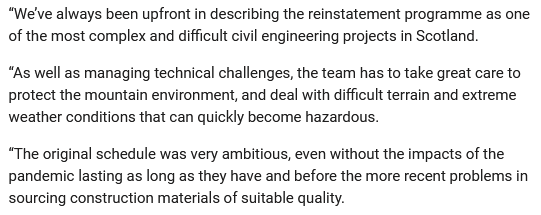
“The original schedule was very ambitious”, suggests HIE knew that the repairs were going to take longer and cost more than suggested – they certainly weren’t upfront about this – and it turns out now the repairs will take longer than the original build. But being HIE they come up with other excuses: you would expect that a company with the buying power of Balfour Beatty would be able to source materials much easier than the ordinary person! And is this really taking care of the mountain environment?
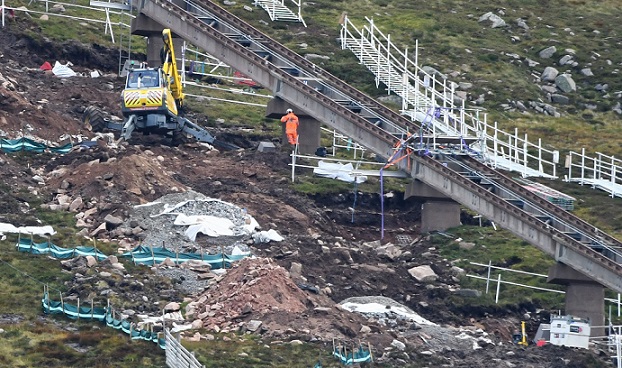
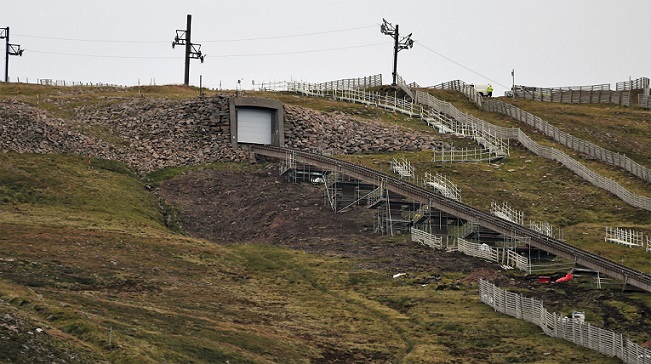
Balfour Beatty as a major player in the construction industry didn’t get where they are today by poor business practices. The real reason for the delays is that they have been asked to repair the funicular based on inadequate information, including gaps in the original Health and Safety File as referred to in the COWI report.
Part (2) of this post will follow shortly and will cover parts of Morrison’s Health and Safety Plan which show that the Funicular project was doomed to failure from the start and casts serious doubt on how long the repairs will last.
It should be concluded from HIE’s response on the FOI for release of the Health & Safety File that either HIE is being deliberately ‘economical with the truth’, or alternatively HIE lacks the understanding of their role as client under CDM Regs. and their legal obligation to maintain the Health & Safety File as a living set to documents describing all repair, maintenance and construction work carried out on the funicular up to the present day, and not just a record of the original design and construction.
I quote from an HSE leaflet on Client duties under CDM Regs. “At the end of the build the principal designer should give you a health and safety file. If the principal designer leaves before the end of the project, the principal contractor should do this. It is a record of useful information which will help you manage health and safety risks during any future maintenance, repair, construction work or demolition. You should keep the file, make it available to anyone who needs to alter or maintain the building, and update it if circumstances change.” So where is the rest of the Health & Safety File covering work (including maintenance) carried out on the funicular over the last 20 years?
There remains a major cover up of the funicular problems by HIE and, I believe, the Scottish Government. Matters being covered up include:
– what were the causes of the major structural failure of the funicular, not just the visible signs of structural failure?
– why has the design of the repairs had to be so radically changed during the repair process – what issues were found during the repair work?
– what financial authority has HIE got for continuing with the repairs given that the time overrun and major repair design changes must be incurring significantly more cost than what was approved by the Scottish Government?
– what was the appraisal process conducted by the Scottish Government to approve the £20m for the funicular repairs and associated works and what objective supporting information was there to convince the Scottish Government that non-funicular options were not viable?
The public is due answers to these questions NOW as it is our money that is being squandered on this ‘vanity’ project.